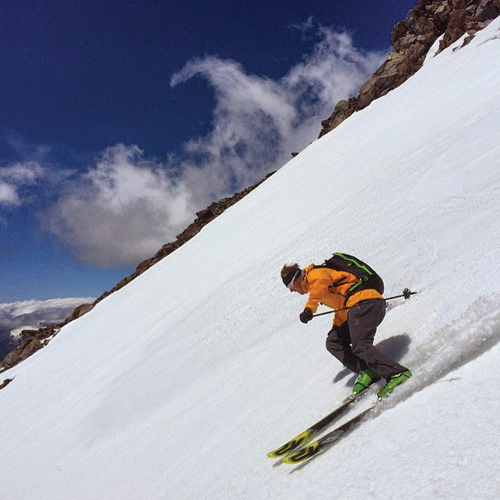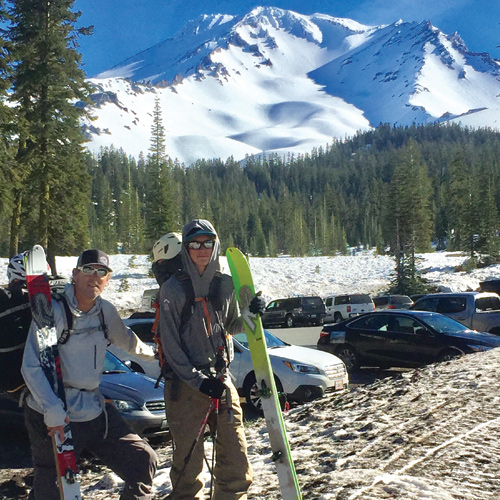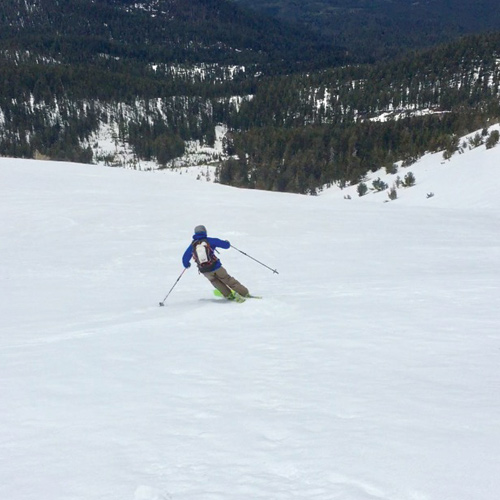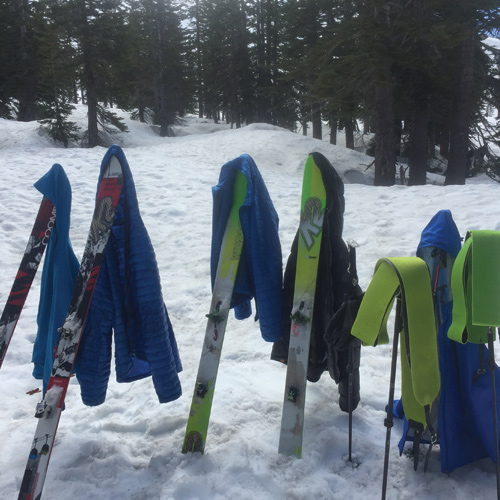It’s no secret that this winter put any Californian worries about drought to bed. And for the Golden State backcountry set, the lasting snowpack on the mountains means a plentiful summer ski-mountaineering season on the high peaks. The iconic Mt. Shasta received 153-percent of normal precipitation, making this past winter one of the wettest on record. We caught up with Shasta guide Rich Meyer to learn more about this boom winter and how an extended summer ski season is keeping the ski stoke alive.

Rich Meyer harvests the California corn. [Photo] Chris Carr
Rich Meyer: California’s still skiing quite well with a deep snowpack in many places. I’ve done more personal ski trips and guided ski trips this season than I have in the last few seasons. It’s been great to put off walking downhill for as long as possible.
BCM: How do your priorities and objectives change when you transition to the summer season?
RM: From an enjoyment perspective, I switch from seeking fresh pow and cold snow to seeking corn. Often there’s a shift from smaller or medium-sized mountains in winter to the bigger mountains in spring and summer. Summiting is harder in the middle of winter. Also, my alpine start time differs by season—if I get an alpine start in winter, it’s typically between 5:00 a.m. and 6:00 a.m., in the spring and summer it’s 1:00 a.m. or 2:00 a.m.
From a safety perspective, my focus shifts a little from watching avalanche conditions in winter to tracking the sun. Watching freezing levels, temperature highs and lows and keeping an eye out for rock fall become my priorities.

Rich Meyer and Wyatt Meyer prep for a multiday climb and ski of Mt. Shasta. [Photo] Ryan Sorenson
RM: There’s no question that there’s a deeper snow pack on most of the mountain—the upper mountain still experiences a ton of wind in winter, so it gets scoured no matter what. Thankfully, the deeper snow pack typically means a longer and more predictable season. In many ways, it insulates itself and keeps the sun-cups from forming too rapidly and the snowpack from getting rotten too quickly. We can also use skins for more of the climb when we have a deep snowpack. Often in June there can be a lot of walking on dirt at lower elevations, which is obviously less ideal.
BCM: Has this wetter season given you more opportunities to pursue objectives you’ve had an eye on but couldn’t tackle because of the snow?
RM: I have been able to ski lines that have been out-of-shape for a few years for sure. And from a safety perspective, there are some lines I’m more comfortable taking clients to, because they are not as steep and are more filled in this year.

Wyatt Meyer skis the south side of Shasta. [Photo] Rich Meyer
RM: I am hoping for bigger days with more vertical and more mileage. With the deeper snow pack and the longer days, we can maximize the corn and great snow at higher elevations as long as the temps don’t get too hot.
BCM: How does your own skiing change when you’re guiding others versus when you go for recreation?
RM: I often travel at a faster pace and with a lighter load when getting out with buddies. My level of acceptable risk changes a bit as well. But my attention to safety and preparedness doesn’t really change.

Meyer crafts a backcountry drying rack for soggy skins and layers. [Photo] Rich Meyer
RM: Go early. Many groups underestimate the time it takes to summit a mountain like Shasta. They frequently miss the quality corn skiing window and limp off the mountain at dark. Also, take advantage of all the lightweight gear on the market. The weight of skis, boots, bindings, packs, crampons, ice axes and everything else can really make a difference. Go light. And finally, do your homework. Check with the rangers, check the weather and check it again. Ask the locals and have a backup plan or two in case things go south.










Related posts: